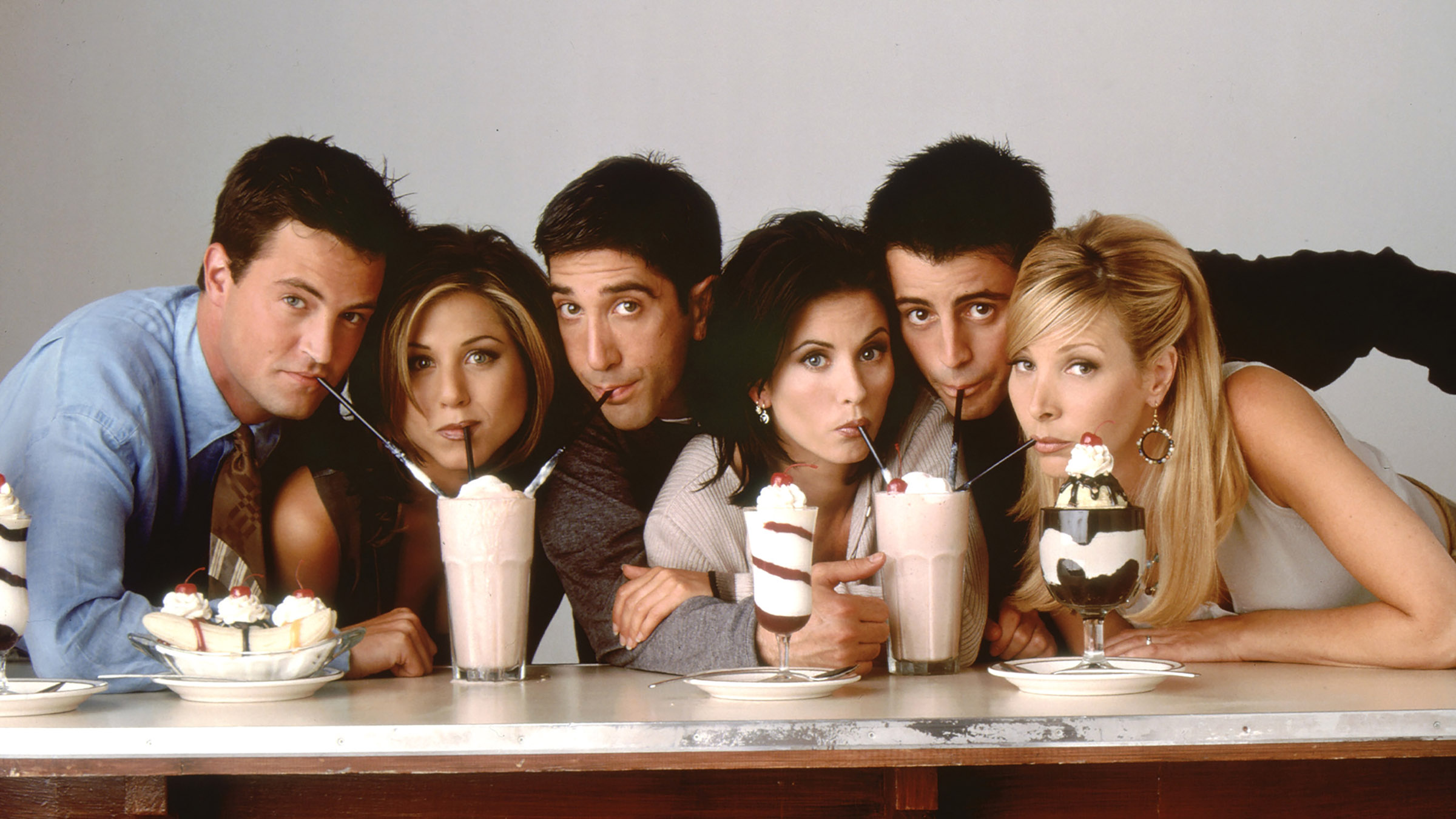TV history has seen the rise and fall of many a genre, from the shoot-’em-up Westerns of the 1950s and ‘60s to the reality show craze of the early 2000s and the hard-hitting, award-sweeping prestige dramas of the 2010s. One genre, however, has never gone out of style: the sitcom. Short for ‘situation comedy’, sitcoms promise light, feel-good fare in which every problem is resolved in 30 minutes – and it’s been catnip to TV audiences for generations, despite the many changes that have occurred in the way we watch TV. So, why have sitcoms stuck around, and why do we love them so much? Let’s investigate.
Black-And-White Beginnings
The origins of the sitcom can be traced back to the UK in the late 1940s, with the BBC series Pinwright’s Progress, though the worldwide success of the genre is generally attributed to US showrunners. Family-focused shows with consistent casts, usually filmed in front of a live studio audience, made series like I Love Lucy a beloved phenomenon in the 1950s and ‘60s. With over 67 million people watching during the peak of its run, the misadventures of Lucille Ball and her real-life husband, Desi Arnaz, proved that the formula was a winner, leading to sitcoms raking in big ratings and their stars becoming household names.
I Love Lucy focussed on a married couple’s misadventures, and many famous sitcoms of that era would do the same, with a slight twist – Bewitched and I Dream of Jeannie would add a quirky supernatural element, while The Brady Bunch and All in the Family portrayed different variations on the nuclear family unit.
Domestic settings tended to make the characters relatable to audiences, but sitcoms weren’t always family-based. 1980s hit Cheers was set in a bar, while M*A*S*H – one of the most-watched TV shows in history – was set during the Korean War. As time went on, series like The Cosby Show, The Fresh Prince of Bel-Air and One Day At A Time offered different cultural perspectives. The particulars could change, but the formula stayed the same: a sitcom needed a regular cast of characters, self-contained episodes, and a lot of laughs.
Pop Culture Giants
Sitcoms continued to shape popular culture into the 1990s and 2000s, when several big-hitters debuted and made an impact that lasts to this day. In 1994, the lives and loves of six New Yorkers came to our screens; originally called Friends Like These, the show’s title was shortened to simply Friends – and it became a global smash. Beyond record ratings, the series influenced everything from hair trends, with Jennifer Aniston’s Rachel inspiring a number of copycat hairdos, to a boom in coffee shop culture.
“It was life-changing and forever will be,” said Courtney Cox, who played Monica, as she reflected during the show’s 2022 reunion. “Not just for us, but for the people watching it – and that’s just such a great feeling to carry forever.”
They were the leaders, but they weren’t alone. Cheers spin-off Frasier, starring Kelsey Grammer as a beleaguered psychiatrist, would be a mainstay on our screens for 10 years, while Seinfeld became the wackier competitor, fully embracing the idea that it was “a show about nothing” and instead revelling in the mundanity of its characters’ various lives.
These shows, and successors like The Big Bang Theory, How I Met Your Mother and Modern Family would all find success because they were warmly familiar, and they were always there for the audience. At the same time, every week, you could tune in and find a character you liked, one you loathed and one you rooted for. No problem was too taxing, no twist too traumatic. It was the type of comfort TV that viewers might even cancel their real-life plans to catch up on.
A Streaming Revival
Of course, in the 2010s, streaming began to take over, and the new way to watch TV slowly eroded the old approach to programming. Suddenly, bingeable shows that ended on cliffhangers seemed tailor-made for a platform where you could get the next episode at the click of a button. Episodes needed to be longer, more serious, something you would talk about online and at school or work the next day.
TV was no longer appointment viewing, and suddenly the sitcom seemed like a relic of the past. Besides, in the age of compelling prestige shows like Stranger Things and Succession, did people really even want stories about ordinary people anymore? Did the pursuit of everything new mean that the past no longer had a place in people’s hearts?
Against all logic, nostalgia is exactly what audiences gravitated towards. Friends ended before video streaming platforms began, and yet its arrival on Netflix in 2015 caused a spark of social chatter where new fans joined older devotees to relive the laughs. The untimely passing of Matthew Perry led to a spike of streams of the show in 2023, and the sitcom remains the most streamed series in many countries, including the UK.
That’s not all: the restored popularity of sitcoms like Arrested Development and Frasier prompted revivals, with original cast members making a return. Streaming also led to the US version of The Office becoming great comfort viewing around the world, often by viewers seeking something familiar to watch before bed.
Familiarity Breeds Content
When it comes to binge viewing, comforting classic TV is becoming a clear preference among audiences. To explain this phenomenon, historian Brian Fuhrer of Nielsen, the company that collates information around TV and streaming viewership, notes the wider landscape in which we live: “Some of these powerful [prestige TV] programmes can be emotionally draining to stream. It can be hard to binge content like that, especially when the world is already so complex today.”
Writing for Psychology Today, Professor Robert N Kraft underlined the same idea, pointing to another beloved series to explain why we love revisiting old shows, calling it ‘The Mister Rogers Effect’: “At the beginning of every show, Mister Rogers went through the same routine of changing into his cardigan sweater and around-the-house sneakers while singing the same reassuring words,” he writes, referencing the children’s programme Mister Rogers’ Neighbourhood. “He did this to provide the necessary stability and comfort to his young viewers. According to research by Cristel Antonia Russell and Sidney Levy, repetition works for adults as well. Knowing what will happen bestows order and safety, especially during times when our lives feel uncomfortably less controlled.”
“When rewatching familiar shows, we receive the stories and emotions we expect,” he continues. “We know how the episodes end and – more importantly – how we’ll feel when they end. Which is one reason we’re more likely to choose comedies for repeated viewing instead of dramas or tragedies.”
Of course, pure nostalgia is also a factor. Kraft writes that by revisiting older media, “we may connect with a person from our past, remembering the conversations we had afterward, the jokes we told, and the references we made.” How many older viewers have joked with younger audience members about the absence of mobile phones in a ‘90s sitcom, or the lack of social media? However, nostalgia plays a part in newer shows as well, as it has always done. The show Happy Days aired in the 1970s, but told stories for people nostalgic for the 1950s. Twenty years later, That ‘70s Show would make stars of Mila Kunis and Ashton Kutcher while connecting older viewers with their past. Today, shows like WandaVision, where a superhero retreats to a living sitcom to escape reality, reveals the power of TV nostalgia through references and jokes that audiences young and old will enjoy.
Looking to the future, it seems clear that wherever TV goes, sitcoms will likely follow. Instead of receding into obscurity in the streaming era, sitcoms have emerged as strong as ever, reviving the emotions and memories that come with them. In that sense, it’s no surprise that some of the most popular shows in the world are still around half an hour, with a live audience, making us smile every single time.














Sorry, the comment form is closed at this time.